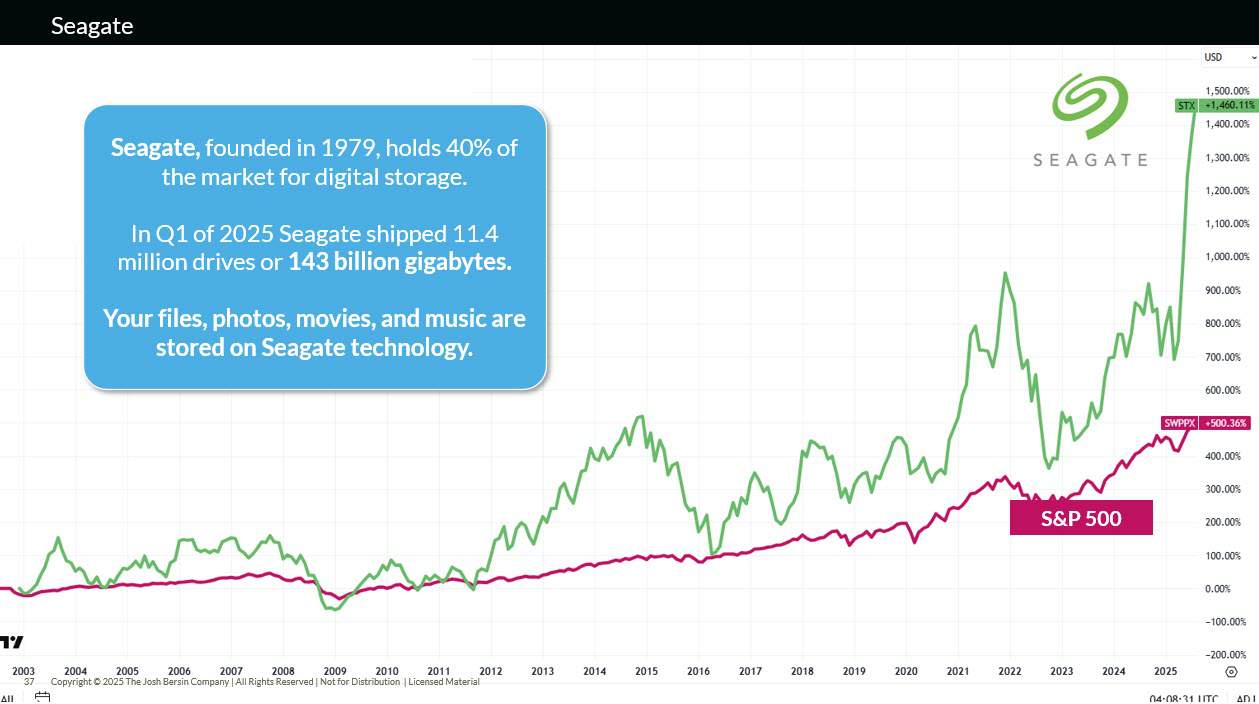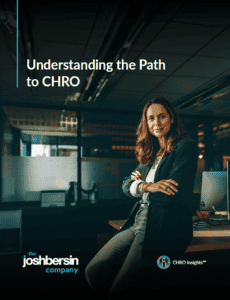I have the opportunity to meet many Chief HR Officers in my travels and they are all focused on AI transformation. They’re playing a pivotal role because ultimately AI transformation is not about technology: it’s about work, jobs, and people.
Today we are publishing an interview with Patricia Frost, the CHRO of Seagate. Her career spans decades of military leadership, consulting, and business – and she brings a “battle tested” view of transformation. The title of her story is “Leave No One Behind.”

AI Transformation is a People Problem
More quotes from Patricia:
“You go to combat with the team you have, not necessarily the team you want. You can’t just hire in someone and say I want to bring you in my team and put you in close combat. Your team is your team. And you build that team. You build on their skill sets. We do a lot of upskilling in the military. It’s your team. You know everyone’s strengths and weaknesses.”
“Middle managers are really the powerhouse of any company. And I don’t know that we spend enough time on our managers, probably our frontline managers, and then the middle management. How well do they understand their teams and the skills within their teams and understand also what people are passionate about? Where would they like to go? What opportunities can be open to them?”
“I am front and center. I think every CHRO needs to be front and center in the AI conversation. They need to be leading. They need to be talking about, will AI take away certain functions within HR? First, we had to take the anxiety down from our workforce. So my approach this year is leave no one behind. I am going to give everyone the opportunity. We’re going to give everyone the same set of tools and training, and I will help you get there. Everyone has a choice.”
All CHROs are Focused On This Issue
Without mentioning all the names, let me cite some other CHROs doing amazing things.
Jacqui Canney, Chief People and AI Transformation Officer of ServiceNow, is leading the charge to “learn AI,” “use AI,” and “build with AI” at the fast-growing company. Her team leads the corporate AI transformation efforts and she directly works with IT and business teams on major transformations.
Tanuj Kapilashrami, Chief Strategy and Talent Officer at Standard Chartered, also leads the AI initiative and directly focuses HR and IT resources toward the bank’s biggest opportunities. Melinda McKinley is her Chief Operating Officer, and Melinda is deep into AI technology, platforms, and applications.
Helen Russell, the CHRO of Hubspot (prior CHRO of Rivian), also leads the company’s AI transformation. They, like ServiceNow, must both build, implement, and teach AI to drive success in their market.
Tracey Franklin, Chief People and Digital Officer at Moderna, has pioneered the adoption of AI throughout all HR and management. Fortune and others have discussed the importance of HR and IT partnering in AI efforts.
Jin Montesano, the CHRO of Lixil, is driving the culture of AI experimentation, transforming culture, HR, and operations around the world.
Kathleen Hogan, the prior Chief People Officer at Microsoft, is now leading the AI transformation inside the company.
And the list goes on and on.
I just met with 40+ CHROs throughout Asia, including CHRO meetings with Grab, Lixil, DBS Singapore, Hitachi, TSMC, SAP, LinkedIn, and many other companies. In every single case these leaders are playing a pivotal role in four AI transformation strategies:
1. Driving AI Readiness and Capabilities.
AI is not a “top down” technology like large ERP projects: rather it’s a bottoms-up, one employee at a time technology. Similar to the early infusion of the PC in the 1980s, every employee has to learn how to become a Superworker in their own way. This means learning to use AI, train and trust AI, build with AI, and leverage AI.
This takes skills-building, experimentation, sharing, and a story-telling culture. Companies that simply threaten employees to “get productive or else” may fail to build the internal skills they need: CHROs understand this issue and are taking the lead in making sure “no one is left behind,” while “everyone is responsible for reinventing their job.”
2. Establishing Technology Platforms for Everyone.
While IT teams are instrumental in technology selection, implementation, governance, and design, it’s the “employee experience” that matters. This week at SAP Connect I talked extensively with Patricia and other CHROs about the need for a “single pane of glass” or “front door to work.” This is no longer a portal or copy of Microsoft Teams: now it’s a carefully built AI technology stack that starts with employee needs.
All the work we’re doing in The Revolution of L&D and Rise of the Superworker must fall on the shoulders of HR leaders, working with their IT teams. As I mentioned earlier, SAP’s entire Joule AI strategy is focused on making employees and managers infinitely more productive. HR must be a part of this technology selection, design, and service delivery.
3. Deciding Who and How To Hire (Or Not To Hire).
Most companies believe that AI will reduce headcount. But how do we reorganize, redesign jobs, and redeploy people for the new wave? We call this “dynamic org design” and it’s going on everywhere.
And the role of talent acquisition is changing fast. As we discuss in our Revolution of Talent Acquisition research, TA is now a “precision science.”
Rather than just filling open slots, the CHRO and team are looking at ways to redeploy internal resources, reskill, or work with leaders to redesign roles. And that gets into new pay models, new job titles, and a new process for talent management as a whole (we call it “Talent Density” now).
4. Enabling and Developing Leaders (Supermanagers).
Fourth is the enormous importance of leaders. Companies that change fast (and well) have management teams who are culturally aligned, connected, and both trained and focused on the future – not trying to “keep the power they already have.” This gives birth to a new model of management, one we call “The Rise of The Supermanager” (launching in two weeks).
CHROs understand this. Patricia discusses it in her podcast, SAP and Microsoft have redesigned their leadership models, and companies like L’Oreal, Walmart, and many others are doing the same. As I like to say, AI is not a technology we “delegate to others.” We all need to learn what it can do and work with our teams to rethink, redesign, and strategically reintegrate our business teams. (Read our Dynamic Organization research for more.)
Bottom Line: CHROs are More Important Than Ever
 I talk with CHROs almost every day, and their role and responsibilities are inspiring and changing fast. Our new CHRO research program details all these changes, and we invite all CHROs and others to join us to discuss these changes. (A new update coming in November.)
I talk with CHROs almost every day, and their role and responsibilities are inspiring and changing fast. Our new CHRO research program details all these changes, and we invite all CHROs and others to join us to discuss these changes. (A new update coming in November.)
In the meantime, I suggest you buy your CHRO a cup of coffee and appreciate all they do. For those of you aspiring to grow in the role, AI is the opportunity for you to bring all your skills to the task. We have a decade of business transformation ahead.
Additional Information
Introducing Galileo™ for Managers, The Leadership Guru At Your Fingertips

